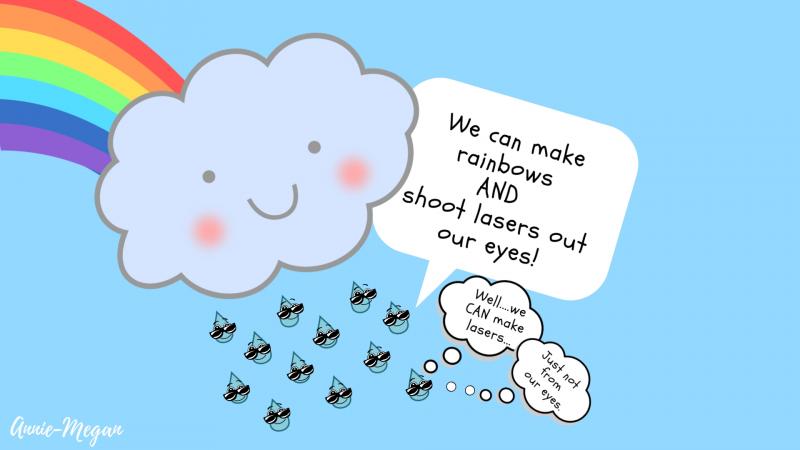
Rainbows have amazed us since the dawn of humanity—either as a divine depiction, a scientific puzzle or an epitome of beauty. These celestial arcs appear when sunlight hits airborne water droplets at some angles. For a rainbow to occur, sunlight refracts into the droplet, reflects within, and refracts out. However, what if light keeps getting reflected in a loop within the droplet?
Much before light, the propagation of sound on a closed path was studied in the 1870s by Lord Rayleigh. He described the oddity of the whispering gallery at St. Paul’s Cathedral in London. Inside the dome, people could overhear whispers from 30 meters across the dome. Rayleigh proposed that whispers are sound waves that can reflect off spherical walls to form a loop. Depending on the frequency of sound and the width of the dome, waves can add up constructively and be heard across the dome. Such waves are called whispering gallery modes.
Light, like sound, can also sustain itself within a water droplet through constructive interference. Scientists use the concept of whispering gallery modes to create lasers from water droplets that measure less than a millimetre. A cavity that allows light to travel in a loop is of great importance in building a laser. Water droplets are nature’s best cavities due to their spherical shape where light can go a million times inside a droplet without much refraction.
Another essential component in a laser is a gain medium that will compensate for the light that gets refracted out. Initially, gases and dyes were used as gain media. However, they suffer from being depleted faster due to leakage, affecting the lifetime of the laser. These days, semiconductors act as gain media. They are compact, offer a better lifetime, and can emit light over the entire visible spectrum. Better still, through Raman scattering, light can be amplified without the need of an additional gain medium. Here, light gains energy by interacting with water molecules in vibration. The final and crucial thing is to immobilise the water droplets for stability. Water droplets are placed on hydrophobic surfaces—analogous to that of a lotus leaf—to achieve this. They are further controlled using an electric field.
Extensive research is being done to employ droplet lasers in areas such as cell tagging and biological sensing. From rainbows to lasers, water-droplets have become indispensable.
